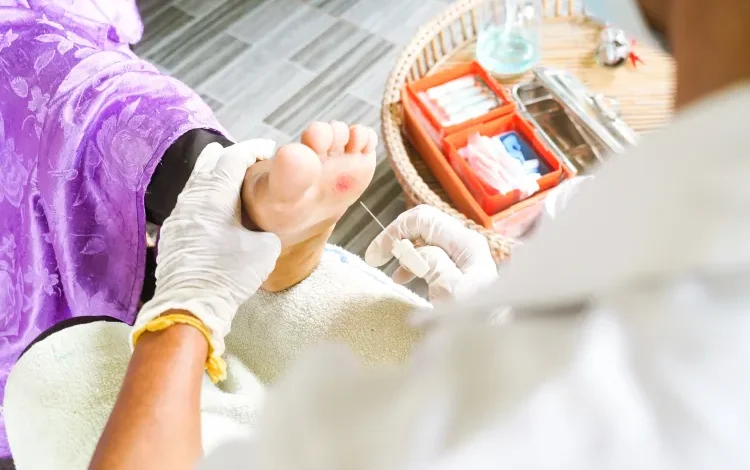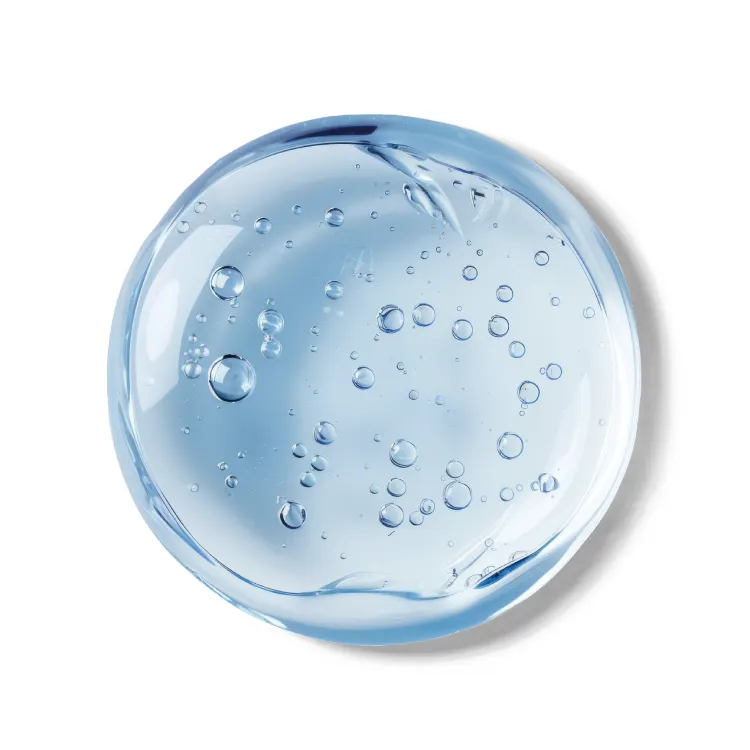Smart Gel Speeds Up Healing for Diabetic Wounds
A New Gel Treatment Restores Blood Flow and Helps Wounds Close in Days Instead of Months

A diabetic wound-healing hydrogel could soon make slow-healing wounds recover much faster. Scientists have developed a special gel that combines natural “healing messengers” with a material that keeps them in place, allowing the wound to get a steady dose of treatment. In tests on diabetic mice, wounds treated with this gel closed by about 90 percent in just 12 days, compared to much slower healing with standard care.
How the Gel Works

Many people with diabetes develop chronic wounds, especially on the feet, that can take months to heal—or never fully recover. One big reason is poor blood flow. In these wounds, a protein called TSP-1 acts like a “stop signal” for new blood vessels, preventing the tissue from getting the oxygen and nutrients it needs.
The new hydrogel is designed to silence that “stop signal.” It contains tiny bubble-like structures called extracellular vesicles, which naturally carry signals between cells. In this case, the vesicles have been engineered to carry a genetic message called miR-221-3p. This message tells the body to lower TSP-1 levels, allowing new blood vessels to form.
These vesicles are mixed into a gelatin-based material called GelMA hydrogel. The hydrogel acts like a soft scaffold, holding the vesicles in place at the wound site and slowly releasing them over time. This ensures that the treatment is delivered steadily, rather than all at once, which helps maintain a healing-friendly environment.
When tested on diabetic mice, the wounds treated with the gel closed significantly faster than untreated wounds. Within just 12 days, about 90 percent of the wound area had healed in the treated group, compared to much slower progress in the control group. The treated wounds also showed a greater number of tiny new blood vessels, confirming that angiogenesis had been restored.
The study’s lead author, Dr. Chuan’an Shen, noted that combining advanced tissue engineering with molecular biology allowed them to address the root cause of poor healing in diabetic wounds.
Why the Hydrogel Matters
The vesicles are mixed into a GelMA hydrogel, which feels a bit like soft jelly. This material clings to the wound, slowly releasing the healing particles over time. It also mimics the body’s own tissue structure, giving cells a good environment to grow.
In lab tests, this combination not only closed wounds faster but also increased the number of tiny new blood vessels in the healing tissue.
Diabetic wounds are a major health problem worldwide. They are difficult to treat with existing methods, and slow healing can cause serious complications.
If this hydrogel treatment works as well in humans as it did in mice, it could transform treatment for diabetic foot ulcers, which affect millions of people worldwide. Faster healing means fewer infections, a lower risk of amputations, and better quality of life.
The approach might also be adapted to help other stubborn wounds, such as those caused by poor circulation, or even to help repair other types of tissue like bone or cartilage.
Right now, the gel has only been tested in mice. The next step is to carry out clinical trials to see if it works safely and effectively in people. If successful, the diabetic wound-healing hydrogel could become a valuable tool for doctors, reducing recovery times from months to days.
[Source]








